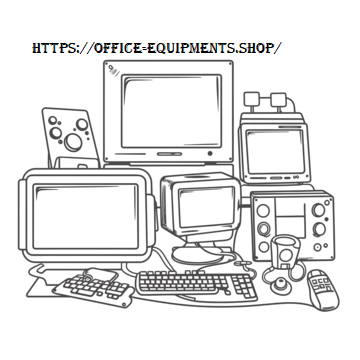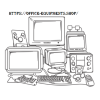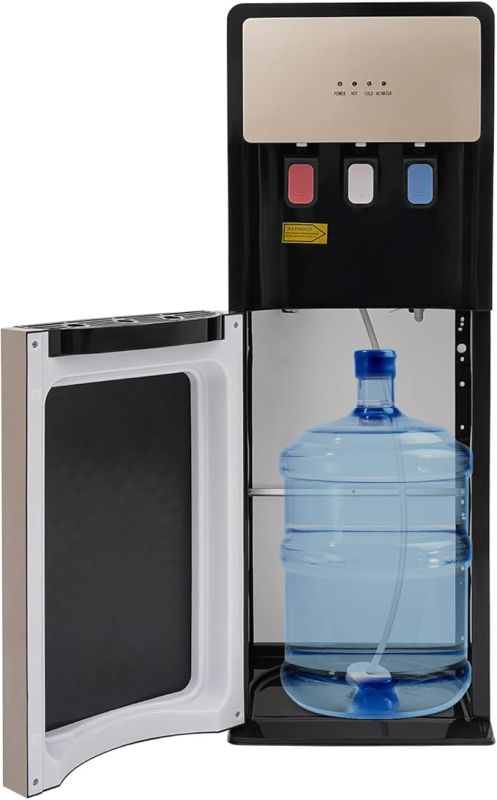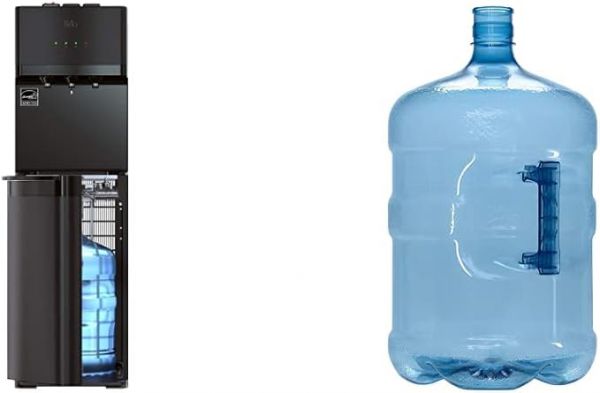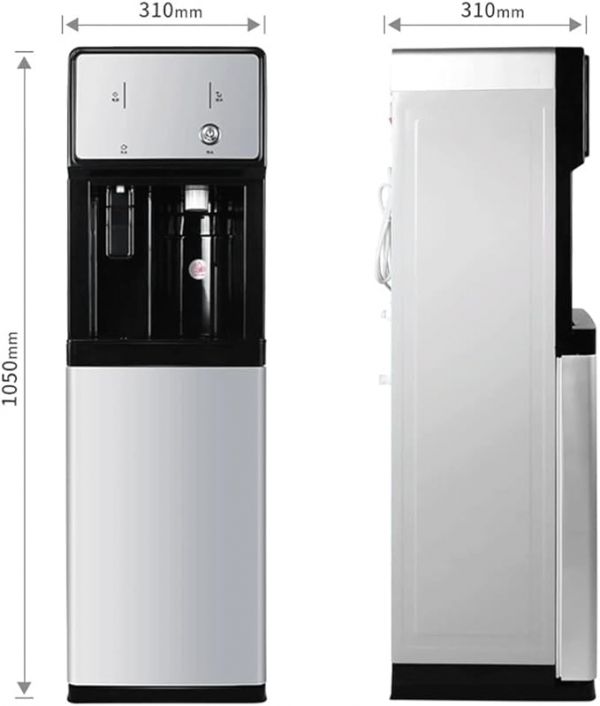Discover the Best 10 Multifunctional Printers You Need for Your Office

-
- Comparing Print Quality Across Different Models
- Assessing Cost-Effectiveness of MFPs for Office Use
- Exploring Connectivity Options: Wi-Fi, USB, and More
- Evaluating Speed and Performance for High-Volume Printing
- Understanding Maintenance Needs and Long-Term Costs
- Identifying User-Friendly Features That Enhance Productivity
- Q&A:
- What features should I look for in a multifunctional printer for work?
- How can a multifunctional printer improve productivity in my office?
- Are there any recommended brands for multifunctional printers that suit office needs?
- What is the average cost range for a good multifunctional printer?
- Reviews

Investing in an all-in-one device can enhance productivity significantly. The Model A stands out with its fast printing speed of 35 pages per minute and superior scanning capabilities. If space is a concern, consider the Device B, which combines compact design with robust features like double-sided printing and mobile connectivity.
For those who prioritize quality, Unit C offers a remarkable print resolution of 4800 x 1200 dpi, perfect for professional reports and presentations. The Model D's user-friendly interface and touch screen simplify operation, making it accessible for all team members.
High-volume environments will benefit from the Machine E, which boasts a monthly duty cycle of 50,000 pages. Alternatively, Device F is known for its energy efficiency and low operating costs, ideal for budget-conscious organizations.
Lastly, don't overlook Model G, which integrates seamlessly with cloud applications and provides robust security features. Selecting the right model ensures that your office runs smoothly and efficiently.
Comparing Print Quality Across Different Models
For optimal print quality, consider the resolution specifications measured in DPI (dots per inch). Devices offering at least 1200x1200 DPI deliver sharp text and rich images, ideal for detailed graphics or professional documents.
The technology behind ink delivery also influences output. For example, thermal inkjet mechanisms typically provide superior color accuracy and vibrant hues compared to piezoelectric systems, which excel at precise monochrome prints.
Color reproduction is critical, especially for marketing materials. Look for reviews that highlight color gamut coverage. Models supporting greater than 90% of the sRGB spectrum ensure fidelity in color representation, essential for branding visuals.
Speed, while secondary to quality, should not be overlooked. Evaluate the pages per minute (PPM) rate that a device can achieve without compromising clarity. A balance between speed and able output should be a priority in high-demand environments.
Another aspect is the type of paper used. Certain machines exhibit significant variance in quality based on whether you’re using glossy, matte, or recycled paper. Always verify compatibility to avoid disappointing results.
Checking user reviews can offer insights into real-world performance. Seek comments about fade resistance and longevity of prints, particularly for any archival needs.
Finally, consider testing samples from prospective models to better assess first-hand performance in your specific applications.
Assessing Cost-Effectiveness of MFPs for Office Use
Choose models with low operating costs to maximize savings. Evaluate the price per page based on ink or toner usage.
Consider total cost of ownership (TCO) over lifespan. Include upfront costs, maintenance, and consumables in calculations.
Research warranty and support services, ensuring timely service without excessive fees. Long-lasting devices reduce replacement frequency.
Analyze multifunction capabilities. Devices combining printing, scanning, and copying reduce equipment purchases, saving space and money.
Review energy consumption. Energy-efficient devices decrease utility bills while contributing to sustainability goals.
Examine user-friendly features. Intuitive interfaces reduce training time and improve productivity, leading to indirect cost savings.
Investigate compatibility with existing systems and software. Seamless integration prevents operational disruptions and enhances workflow.
Compare print speeds and quality. Higher speeds can boost productivity, but ensure that quality meets business standards to avoid reprints.
Seek testimonials or case studies from similar businesses. Real-life experiences provide insights into long-term performance and reliability.
Consider leasing options as an alternative to outright purchases. Leasing can provide access to newer technology without significant upfront investment.
Evaluate any hidden costs such as installation charges or additional features that may incur extra fees.
Exploring Connectivity Options: Wi-Fi, USB, and More
Wi-Fi connectivity allows seamless integration with multiple devices without the constraint of cables. Look for models that support dual-band (2.4GHz and 5GHz) for better performance and reduced interference. Ensure compatibility with your network for optimal operation.
USB connections provide a reliable, direct link to your computer or laptop, often resulting in faster data transfer rates. Consider devices with USB 3.0 ports for enhanced performance over older standards.
Bluetooth support is another highly sought-after feature, allowing for quick pairing with smartphones and tablets. This can make mobile printing tasks considerably convenient.
Another important aspect is cloud connectivity. Devices that support Google Cloud Print or Apple AirPrint offer the ability to send documents from anywhere, increasing flexibility and usability. Look for models that simplify configuration and support various cloud services to enhance your experience.
Near Field Communication (NFC) is available in select units, enabling one-touch printing from compatible mobile devices. This feature is particularly useful in collaborative environments and can save time.
Make sure to review user feedback regarding the reliability of each connection type, as practical experience can provide insights that specifications alone may not reveal.
Evaluating Speed and Performance for High-Volume Printing
Assess the pages per minute (PPM) rating first. Look for devices offering more than 30 PPM for efficient workflow during peak print jobs. Many models boast impressive speeds, but verify these claims through user reviews or independent tests.
Examine the first-page-out time (FPOT) as well. This metric indicates how quickly a machine delivers the first printed sheet, which is critical in a busy environment. A desirable FPOT is typically under 10 seconds.
Monitor the duty cycle specification, which reflects the maximum number of pages a device can handle monthly. Aim for units with a duty cycle that exceeds your anticipated print volume by at least 20% to ensure longevity and consistent performance.
Investigate duplex printing speed. Units that support fast two-sided printing can significantly reduce overall printing time. Look for a model that can print both sides in less than 20 seconds overall.
Consider the warm-up time as well, particularly for laser technology. These devices can take several seconds to reach operational temperature. A warm-up time below 30 seconds is ideal for rapid output.
Check the print resolution. Higher DPI (dots per inch) settings yield finer detail, suitable for complex documents or images. Aim for at least 1200 DPI for superior quality, especially in color jobs.
Evaluate connectivity options such as Ethernet and Wi-Fi capabilities to ensure seamless integration into your existing network. Devices with mobile printing features, such as AirPrint or Google Cloud Print, can enhance versatility.
The ability to handle various media types and sizes without manual adjustments is essential. Examine tray capacity for larger jobs; a main tray with a capacity of at least 500 sheets can reduce downtime for frequent refills.
| Feature | Recommended Specification |
|---|---|
| Pages Per Minute (PPM) | 30+ PPM |
| First Page Out Time (FPOT) | Under 10 seconds |
| Monthly Duty Cycle | 20% above expected volume |
| Duplex Speed | Under 20 seconds |
| Warm-up Time | Under 30 seconds |
| Print Resolution | 1200 DPI or higher |
| Tray Capacity | 500 sheets or more |
Understanding Maintenance Needs and Long-Term Costs

Regular maintenance is necessary to ensure optimal performance and longevity of your device. Schedule routine cleaning every few months to keep components free of dust and debris, which can impact print quality and operation. Use manufacturer-recommended cleaning supplies to avoid damage.
Monitor ink and toner levels closely; neglecting this can lead to not only inconsistent print quality but also premature wear of internal parts. Implement a tracking system for consumables, allowing timely replacements and minimizing downtime.
Create a budget for long-term expenses, including replacement cartridges, maintenance kits, and service contracts. Prioritize models with a proven track record of low-cost consumables to enhance cost efficiency over time.
Consider the warranty options. Extended warranties can provide protection against unexpected repairs, ultimately saving on larger costs should technical issues arise. Analyze the reputation of the manufacturer’s support service, as responsive customer service can reduce potential losses.
Evaluate software compatibility with your existing systems. Regular updates are essential for maintaining functionality and security. Set aside resources for potential upgrades to ensure compatibility with industry standards.
Assess the average lifespan of the unit; investing in higher-quality designs that may have a higher initial cost can lead to lower long-term expenses. Products that are easier to service and repair may offer savings through increased uptime and extended usage life.
Identifying User-Friendly Features That Enhance Productivity
Integrate automatic duplex printing to save time and paper. This feature eliminates the need for manual double-sided printing, streamlining document handling.
- Touchscreen Interface: An intuitive touchscreen interface simplifies navigation through menus and settings, reducing the learning curve.
- Mobile Printing: Look for options that support mobile printing through various apps. This enables quick printing from smartphones and tablets without needing a computer.
- Scanning to Cloud: Ability to scan directly to cloud services enhances data management and accessibility, allowing users to store and share documents effortlessly.
- Enhanced Paper Handling: Multiple input trays facilitate handling various paper sizes and types, minimizing interruptions during high-volume tasks.
- Fast Printing Speeds: Consider models with high pages per minute (PPM) ratings to ensure quick turnaround times for print jobs.
- Energy-Efficient Modes: Features such as sleep modes and energy saver settings help reduce power consumption, supporting sustainability and lowering operating costs.
Evaluate the capabilities of integrating with existing software systems. Compatibility with popular office applications can streamline workflows and improve efficiency.
- Built-in Security Features: Protect sensitive information with secure printing options and user authentication methods.
- Regular Firmware Updates: Regular updates enhance performance and security, ensuring devices operate smoothly and securely.
Regularly assess user feedback and reviews to identify additional practical features that further enhance productivity in daily operations.
Q&A:
What features should I look for in a multifunctional printer for work?
When selecting a multifunctional printer, consider features such as print speed, scanning resolution, automatic document feeder, connectivity options (like Wi-Fi and USB), and compatibility with your devices. It's also beneficial to look for cost-effective ink solutions and a user-friendly interface, which can make daily operations smoother.
How can a multifunctional printer improve productivity in my office?
A multifunctional printer can significantly enhance productivity by combining multiple tasks into one device. Instead of having separate machines for printing, scanning, and copying, you can manage all these functions from a single printer. This not only saves space but also reduces the time spent switching between devices, allowing for quicker turnaround on projects and documents.
Are there any recommended brands for multifunctional printers that suit office needs?
Several brands are well-known for producing reliable multifunctional printers suitable for office use. Brands like HP, Canon, Brother, and Epson offer a variety of models tailored for different business sizes and needs. It's advisable to check user reviews and expert ratings to find the model that best fits your specific requirements.
What is the average cost range for a good multifunctional printer?
The cost of a multifunctional printer can vary widely based on features and capabilities. On average, small to medium-sized models can range from $150 to $500. High-end models designed for larger office environments may exceed $1,000. It’s important to consider not only the upfront cost but also ongoing expenses like ink or toner, maintenance, and energy consumption to understand the total cost of ownership.
Reviews
Isabella Miller
I recently purchased the "Top 10 Multifunctional Printers (MFP) for Work" guide, and it has been incredibly helpful in choosing the right printer for my home office. The recommendations are based on solid criteria, and I appreciate the detailed insights into each model's features. I love that the printers listed are versatile and can handle various tasks, from printing to scanning and copying. It's great to see a range of options for different budgets and needs. The comparison tables made it easy to weigh the pros and cons of each printer, saving me a lot of time in research. I ultimately went with one of the recommended models, and it has exceeded my expectations in terms of print quality and speed. The wireless connectivity feature is a huge plus, allowing me to print directly from my phone. I highly recommend this guide for anyone looking to invest in a multifunctional printer. It's straightforward, comprehensive, and made my decision-making process so much simpler.
Michael Johnson
I recently purchased one of the multifunctional printers from the "Top 10 Multifunctional Printers (MFP) for Work" list, and I must say I'm quite impressed. The setup was straightforward, and I appreciated the wireless connectivity feature, which makes printing from my laptop and phone very convenient. Print quality is excellent—documents come out sharp, and colors are vibrant. Scanning and copying features are also very handy in my daily tasks. I often need to print reports and presentations, and this printer handles everything smoothly. The touchscreen interface is user-friendly, making it easy to navigate through different functions. Plus, the speed of printing is faster than my previous model, which I find quite beneficial for my workflow. One drawback I noticed is that the ink cartridges can be a bit pricey, but I think the quality of prints justifies the cost. Overall, I'd recommend this printer to anyone looking for a reliable and multifunctional tool for their workspace.
RainbowGoddess
I recently purchased the "Top 10 Multifunctional Printers (MFP) for Work" guide, and I must say, it’s been incredibly helpful. As someone who frequently prints, scans, and copies documents for my job, I needed a reliable source to help me choose the right printer. The reviews provided detailed comparisons, highlighting features and pros and cons of each model, which made my decision process much easier. I particularly appreciated the breakdown of specifications and user experiences, giving me a clear picture of what to expect. After following the recommendations, I ended up with a printer that perfectly fits my needs. It's compact yet powerful, handling everything from color printing to high-resolution scans effortlessly. I especially liked the tips on maintenance and troubleshooting, which have already saved me time. If you are looking for a practical guide to choose a multifunctional printer, this resource is definitely worth it. I highly recommend it to anyone in search of a reliable office companion!
John
I recently purchased the "Top 10 Multifunctional Printers (MFP) for Work" and I must say, it's been a solid addition to my office setup. I chose one based on its features like printing, scanning, and copying, which is perfect for my daily tasks. The setup was straightforward and the print quality is impressive for both documents and images. I appreciate the speed at which it prints, making it easy to handle multiple jobs without delay. The scanning function is convenient, allowing me to digitize important paperwork quickly. It also has wireless connectivity, so I can print directly from my phone or laptop, which is a huge plus. One minor downside is the size; it takes up a decent amount of space on my desk. However, considering its capabilities, I find it manageable. The operating costs are reasonable, and it's fairly easy to replace cartridges. Overall, I’m satisfied with this printer and would recommend it to anyone looking for a reliable multifunctional device for work.
Robert
I recently purchased the "Top 10 Multifunctional Printers (MFP) for Work" and I’m quite impressed. As someone who relies on a printer for both personal and work tasks, I found this guide incredibly helpful. The list covers a range of printers with various features to suit different needs. What stood out to me was the detailed comparison of functionalities, including printing, scanning, and faxing. Each printer's specifications were clearly laid out, making it easy to identify what I would need for my office setup. The pros and cons for each model were also very handy. I settled on one that not only fits my budget but also offers high-quality printing and fast scanning speeds, which is a huge plus. The setup was straightforward, and I appreciate how user-friendly the interface is. If you're in the market for a multifunctional printer, this guide is definitely worth a read. It saved me time and helped me make an informed choice. Highly recommend it!
SunshineGirl
I recently purchased the "Top 10 Multifunctional Printers (MFP) for Work" guide, and I must say, it has been really helpful. As someone who often juggles various tasks at the office, finding a reliable printer is a must. The guide provided clear comparisons of different models, which made the selection process straightforward. I appreciate how it outlined the pros and cons of each printer, focusing on features like print speed, scanning quality, and connectivity options. One model, in particular, caught my attention due to its wireless capabilities and user-friendly interface. I didn’t just want a printer; I needed a multi-functional device that would simplify my workflow. Using the recommended printer has made my day-to-day tasks much smoother. The print quality is impressive, and it handles scanning and copying with ease. If you’re in the market for a versatile printer, this guide is definitely worth checking out. It saved me time and effort in making the right




